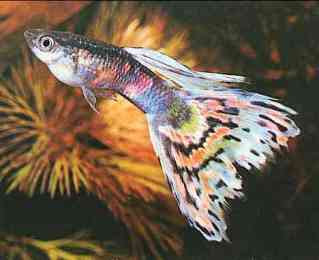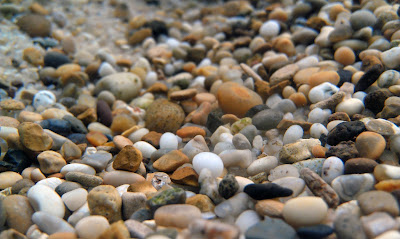Tips on Pearl Gourami Care and Spawning

The pearl gourami or Trichogaster leeri is a member of the family Belontiidae. Pearl Gouramis inhabit the lowland swamp waters of Sumatra, Borneo, Malaysia and Thailand.
All gouramis belong to the suborder Anabantid. The members of this suborder evolved in poorly oxygenated environments. They subsequently developed an auxiliary breathing apparatus in addition to their gills. This lung-like organ, the labyrinth organ, allows them to breathe atmospheric oxygen. At some point in the evolutionary process they became dependent on both as a means of survival. They will die without a combination of dissolved and airborne oxygen. This is why they are frequently seen at the water's surface.
Unlike the paradise fish, the pearl gourami is a timid creature. They are good additions to a community tank if they are provided with plants, rocks and aquarium décor in which to hide. There optimum water condition is a neutral pH with a water temperature around 78 °F.
Pearl gouramis reach a length of approximately 5 inches and have a life expectancy of 5 years.
They are omnivorous. But they tend to function better on a balanced variety of tropical fish flakes and protein whether freeze-dried, frozen or live.

This species is sexually dimorphic, meaning each sex possesses traits specific to their gender such as size and coloration. Males are typically larger and more colorful than females. The males also exhibit an orange tinge to their fins with the exception of the tail fin. Males have a bright orange region around their throat area. This distinctive coloring is not present in juveniles. It develops as the fish reaches sexual maturity. The color intensifies prior to spawning and is used to attract the female of the species.
Breeding Gouramis
Gouramis have a natural inclination to pair up. Gouramis spawn in still water in their natural habitat. Turn the filter capacity in your breeding tank down prior to spawning. The color of the male's throat region will indicate that he is ready to spawn. A sponge filter works well to simulate mating conditions. And you have the added bonus of not having to worry about the fry getting sucked up into the filter.
Provide plants for the breeding tank. The male will use his labyrinth to build a bubble nest on the water's surface. He will use some of the provided plant matter to help the nest stay together.
Gouramis instinctively spawn underneath the bubble nest. Once fertilization occurs, the male gourami will gather up the eggs with his mouth and spit them into the bubble nest to mature.

Remove the female gourami from the breeding tank after they have spawned. It is the male's job to tend to the nest. He will guard and care for the eggs until they hatch. You will find the male a very attentive custodian of his future offspring.
The fry will hatch in approximately 24 hours. They will be free swimming in 2-3 days. It is now time to remove the male to insure that he does not eat the fry. Once free swimming, the fry can be fed infusoria, or rotifers. When they get about a week old feed them powdered fry food, or newly hatched brine shrimp. An economical alternative is powdered eggs. Make sure not to over feed the fry or you will foul up the water in your tank.
This article is brought to you courtesy of Exotic-Aquariums.com. Helping you have healthier and happier fish is our business. We don't sale fish tanks. We only sell complete aquariums. We offer unique alternatives to the traditional rectangle fish tank, featuring desktop, wall mount and free standing models. Get the Look of a Custom Aquarium Without the Custom Price Tag at Exotic-Aquariums.com.
If you found this article interesting and would like to learn more check out our Online Fish Buying Guide.
Written by Stephen J Broy
Article Source: http://EzineArticles.com/?expert=Stephen_J_Broy



Comments
Post a Comment